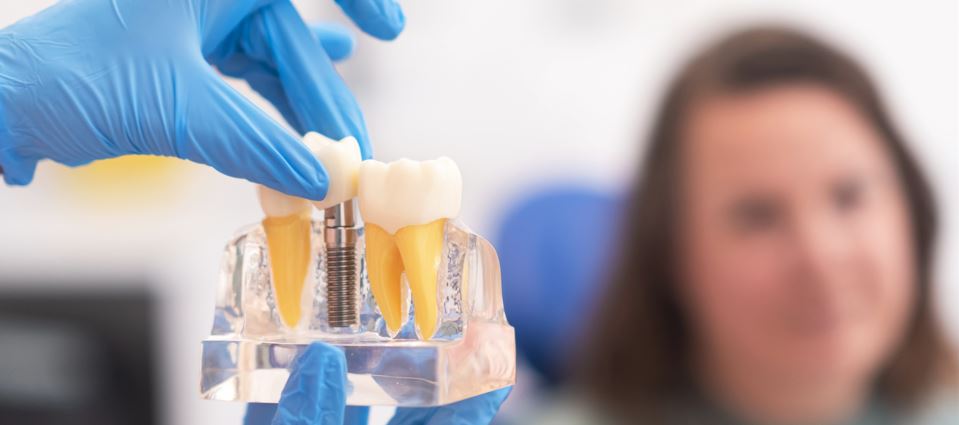Implants
A dental implant is an artificial root made out of titanium or other materials that are compatible with the human body. These posts are placed into the jawbone to serve as anchors to replace teeth or to help retain dentures. Implants are one of the most popular options available today for replacing a missing tooth or teeth because of their natural look, feel and functionality. Patients with dentures who cannot tolerate, chew or speak can significantly benefit by placing dental implants to firmly hold onto their dentures so that they can restore their ability to eat and speak comfortably.






